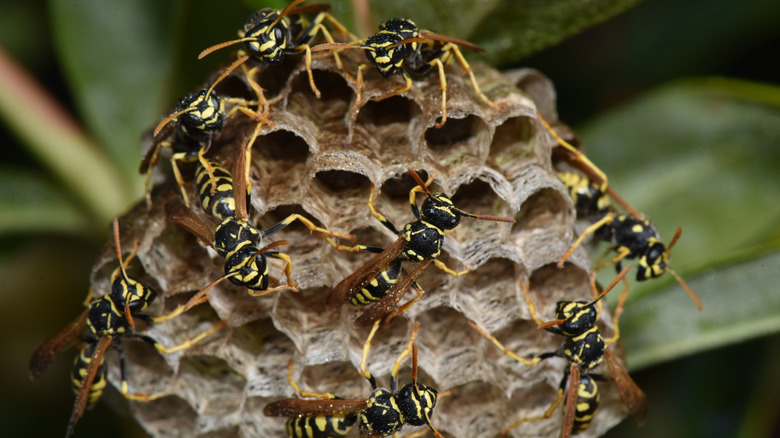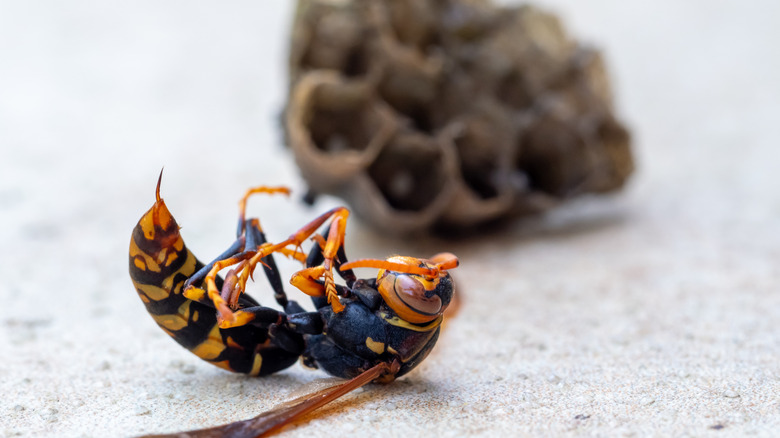How To Kill Wasps Living In Your Lawn
We may receive a commission on purchases made from links.
They don't pay rent. They don't follow lawn etiquette. And worst of all, they come with stingers. Wasps in your yard are aggressive squatters that can quickly ruin an otherwise peaceful afternoon. And while one or two might buzz off eventually, a cluster of them hovering around your bushes or buzzing loud enough that you can hear them from inside your home is usually a sign they've settled in. However, you don't need to call in pest control just yet.
Before you jump into action, it's important to understand why they're even there. Wasps are incredibly territorial, especially during late summer, and they build their nests in cozy, undisturbed areas. Your lawn might offer perfect shelter with its loose soil, hidden corners, and many bugs to snack on. Fermented food, particularly rotting fruit, in unsecured trash bins and compost piles can also attract wasps to your home and garden. Knowing where and why they're nesting helps you act smarter.
For lighter infestations, mix a tablespoon of dish soap with water in a spray bottle and aim carefully at any wasps. The science behind this solution is simple: dish soap breaks the water's surface tension, which allows it to coat and seep through the wasp's exoskeleton. Once that happens, the insect can't breathe properly and quickly drowns. But if you're dealing with a more serious takeover — especially if there's a visible nest or a swarm near the ground — you'll need a commercial insecticide to kill a wasp nest and safely clear the area once they're gone.
How to safely use commercial wasp killer
For heavier infestations, dish soap won't do the trick; you'll need something much stronger. To begin, scan your yard for any signs of nests, especially around eaves, bushes, or patches of loose soil. Once you've found the source, gear up. Long sleeves, gloves, and even goggles aren't overkill here. That's because wasps can get aggressive when they sense a threat.
Using a wasp insecticide like Raid Wasp & Hornet Killer Spray, soak the nest from a safe distance, ideally at night when the colony is less active. Then wait. Give it a full 24 hours before checking for movement, and don't hesitate to reapply if you still see movement. Once you're sure the nest is inactive, approach with caution. Dislodge it gently using a long-handled tool, and drop the nest directly into a thick trash bag. Double-bag it if needed and seal the bag. Then, store it somewhere secure until trash day, ideally in a tightly closed bin away from foot traffic or curious pets. And remember, wasps are persistent. Regular checks around your lawn are just one of the ways to get rid of wasps before they become a real nuisance.

